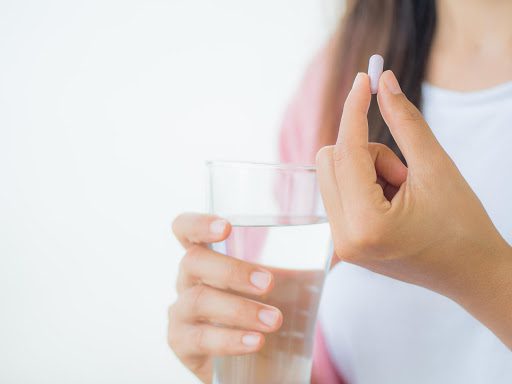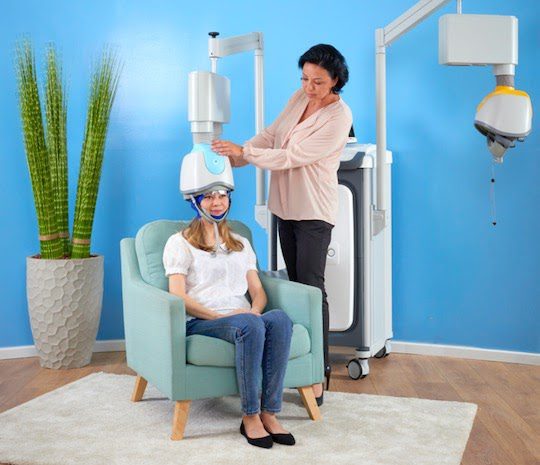The world of mental health is constantly in flux as it attempts to offer patients battling various disorders the best and safest possible care. This is particularly true in cases of depression, with mental health professionals evaluating TMS vs. medication, as they weigh the benefits and contraindications of each treatment. Read on to find out more about these two popular therapy options.
Antidepressants work by influencing the neural activity in the brain through a number of pathways shown to offer symptom reduction and mood elevation among patients battling depression.
Antidepressants are commonly divided into three “generations,” in addition to a fourth, atypical grouping, based on their period of development and defining characteristics:
First-generation depression medication was first made available in the 1950s. Originally developed as a treatment for tuberculosis, researchers were impressed by its mood elevating abilities, and eventually, it was seen as a treatment for depression.
First-generation antidepressants mainly include two classes of medications: monoamine oxidase inhibitors (MAOIs) and tricyclics (TCAs).
MAOIs stop the activity of the enzyme monoamine oxidase, which takes part in the degradation process of three neurotransmitters—serotonin, norepinephrine and dopamine. As such, the end goal of MAOIs is to keep all three neurotransmitters active for a longer period of time.
TCAs work similarly to MAOIs, by blocking the reabsorption of the neurotransmitters serotonin and norepinephrine, thereby extending their activation periods.
First-generation antidepressants are considered to be highly effective in treating depressive symptoms and are still prescribed in cases of treatment-resistant depression. Although their efficacy is well-established, they often come with severe side effects that cause many patients to discontinue taking them. These include blurred vision, increased heart rate, shaking, and sweating. The adverse effects of these medications spurred the eventual transition from first to second-generation antidepressants.
The move to second-generation antidepressants began in the early 1980s, with a focus on what appeared to be a key neurotransmitter in mood elevation—serotonin. The medications in this generation work to prolong the activation period of this specific neurotransmitter, which was found to be roughly as efficacious as first-generation options but caused significantly less severe side effects. While there is some debate over what antidepressants fall within this group, it is universally accepted that selective serotonin reuptake inhibitors (SSRIs) should be considered a second-generation class of antidepressants, if not embody the entire category.
SSRIs work within the synaptic cleft to keep the neurotransmitter serotonin from being reabsorbed. This method of prolonging its activation was shown to offer significant symptom relief to patients battling depression. As a result, SSRIs became the go-to pharmacological treatment for depression and were granted the FDA seal of approval for treating this condition.
However, SSRIs also come with their own possible side effects, with weight gain and sexual dysfunction being among the more common ones. Due to their side effects, more research was put into finding a better combination of efficacy and tolerability.
Third-generation antidepressants were developed in the 1990s in an aim to strike a more advantageous balance between the treatment’s safety (in this case, side effect tolerability), and its efficacy. They attempt to do so by broadening their effect beyond serotonin alone. Serotonin norepinephrine reuptake inhibitors (SNRIs) are the main medication class in this category.
SNRIs block the reabsorption of both serotonin and norepinephrine. The medications included in this class have been shown to be about as efficient as SSRIs and induce the same possible side effects, but at a lower level of adversity. As a result, SNRIs offer greater tolerability for roughly the same results. SNRIs typically work well for patients who do not have treatment-resistant depression.
As their name suggests, atypical antidepressants do not follow the usual route of alleviating symptoms of depression. Some atypical medications still extend the activation period of serotonin, though they do so at a different stage in the activation process compared to SSRIs and SNRIs, which focus on the synaptic cleft.
A unique example of atypical medications is bupropion (also known as Wellbutrin), which works exclusively on the dopaminergic pathway, without involving serotonin. This medication is one of the few antidepressants not to interfere with the patient’s sexual functioning.
Atypical side effects vary and can include dizziness, insomnia, weight gain, and (in cases other than bupropion) sexual dysfunction. Like MAOIs and TCAs, these days atypical antidepressants are usually prescribed to treatment-resistant patients, whose symptoms were not significantly alleviated with SSRI or SNRI medication.

An antidepressant would be considered an unsuitable treatment option in one of two cases:
Transcranial magnetic stimulation (TMS) is a non-invasive treatment option for depression. It utilizes electromagnetic fields to regulate the neural activity of brain structures found to be associated with depression, particularly the bilateral prefrontal cortex. TMS is a noninvasive treatment which does not necessitate the use of anesthesia, normally does not cause any significant or long-lasting side effects, and can be incorporated into the patient’s daily routine.
There are currently two types of TMS on the market as a treatment for depression: traditional TMS and Deep TMS.
Traditional TMS was FDA-cleared in 2008 to treat depression. It uses a handheld figure-8 device to send the electromagnetic fields it generates to the brain. While it has been recognized by the FDA for its efficacy and safety, traditional TMS can encounter targeting issues, as its handheld device can miss the sought after brain structure.
Deep TMS was FDA-cleared to treat depression in 2013. It uses its own, patented H-Coil technology held inside a cushioned helmet that is fitted onto the patient’s head. Deep TMS’s unique technology and apparatus allow it to reach wider areas of the brain simultaneously, in addition to reaching deeper brain regions directly. As a result, Deep TMS is able to avoid the targeting issues that traditional TMS sometimes contends with.
TMS is a viable treatment option either on its own or in combination with other treatment options, including medication.
Patients who stand to gain from TMS can be both those with a major depressive disorder (MDD) diagnosis, or those with depressive symptoms. However, insurance providers usually require that patients have an official MDD diagnosis, in addition to having unsuccessfully tried at least two previous types of antidepressant medication, to qualify for coverage.

Major depressive disorder (MDD), commonly known as depression, is characterized by a sense of emptiness experienced through such feelings as sadness, anhedonia (a lack of happiness), a lack of hope, and a longing for something or someone who has been lost. It can also include a lack of energy, erratic sleeping patterns, drastic weight changes, difficulty concentrating, excessive guilt, and suicidal ideation.
Depression affects roughly one in 15 adults, or 6.7% of the adult population. 17.3 million adults (or 7.1%) of US adults are reported to have experienced one or more depressive episodes during their lives. Among individuals 18-29 years old, the prevalence of MDD is three times higher than among those 60 and older. Females tend to experience depression 1.5-to-3 times more than males, from the age of adolescence onward.
Depression can many times feel a lot like grief, which refers to feelings of mourning and intense sadness over the loss of a loved one, an ability or even an idea. Moreover, a grieving period (for instance, following the death of someone close) can coincide with a major depressive episode, making the two even harder to distinguish from one another.
In assessing a state of emotional anguish and deciding how to offer support, it can be useful to consider which themes are usually associated with grief, and which with depression:
TMS has been shown to offer symptom alleviation to patients battling depression, and particularly in cases where psychopharmacology did not manage to offer them relief. While it cannot guarantee full remission for all treatment-resistant patients, many do find it beneficial in their journey for greater well-being.
In relation to Deep TMS, a 2015 multicenter sham-controlled study published in World Psychiatry found that roughly one out of three patients battling treatment-resistant depression managed to achieve remission after four weeks during the treatment’s acute phase.
The study also found that close to 80% of patients who did not immediately respond to the treatment during its acute treatment phase, experienced an improvement of their symptoms during the following continuation phase.
It is also worth noting that Deep TMS was reported to have an even greater level of efficacy within a real-life setting, outside of a clinical study setting. From the data of over 1000 participants treated for MDD, about 75% achieved a positive clinical response following Deep TMS treatment, with one out of two achieving remission.